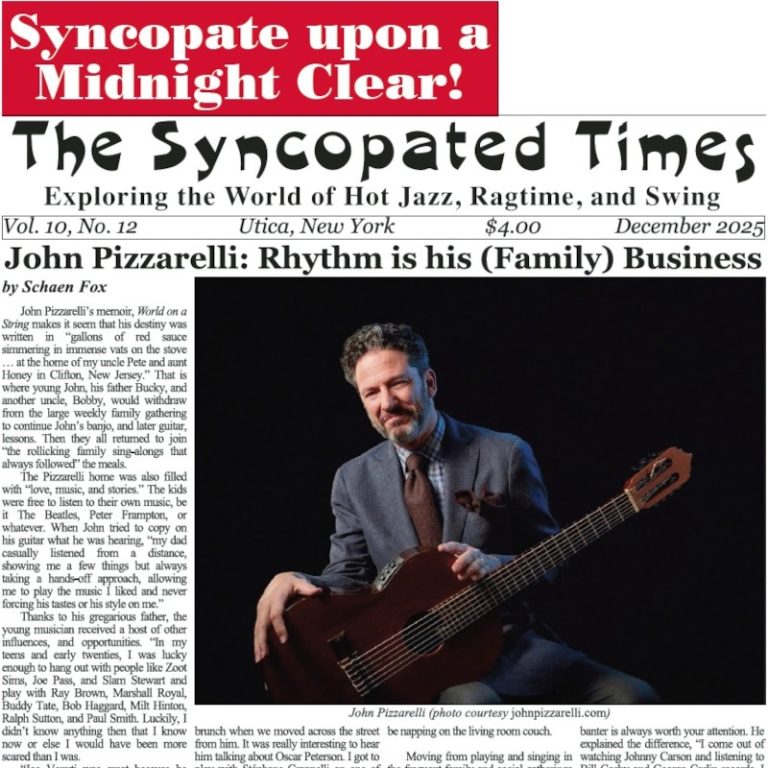A few months back Dan Barrett had an essay subtitled “What’s in a Name?” which listed off all the amazing jazzmen blessed with monikers that are almost too good to be true. I would add cornetist Digby Fairweather to that list. What a handle for a British Jazz musician! But of course British jazz was full of too-good-to-be-true names like Monty Sunshine and Kenny Ball. Though a member of the generation that followed the trad boom, Digby has earned his place among those great names with a career now entering its 50th year—almost 45 at what he considers the professional level.
This is an example of a special kind of collection I’ve learned to enjoy. Many jazz musicians have a reels of tape collected over decades and a few of them have created “greatest hits” albums mixing live cuts and a choice tracks from their hard-to-find back catalog. Unless they have become known for a theme song, a jazz musician’s greatest hits aren’t usually the crowd favorites, they are the performances they are proudest of, whether because of their own contribution or the success of the greater whole. These albums provide not just a retrospective look into the musical mind of the artist but are also nearly guaranteed to feature great music throughout. They also trace an arc through decades of history that the usually short careers of pop stars couldn’t hope to follow.
The music on Notes fro
You've read three articles this month! That makes you one of a rare breed, the true jazz fan!
The Syncopated Times is a monthly publication covering traditional jazz, ragtime and swing. We have the best historic content anywhere, and are the only American publication covering artists and bands currently playing Hot Jazz, Vintage Swing, or Ragtime. Our writers are legends themselves, paid to bring you the best coverage possible. Advertising will never be enough to keep these stories coming, we need your SUBSCRIPTION. Get unlimited access for $30 a year or $50 for two.
Not ready to pay for jazz yet? Register a Free Account for two weeks of unlimited access without nags or pop ups.
Already Registered? Log In
If you shouldn't be seeing this because you already logged in try refreshing the page.




